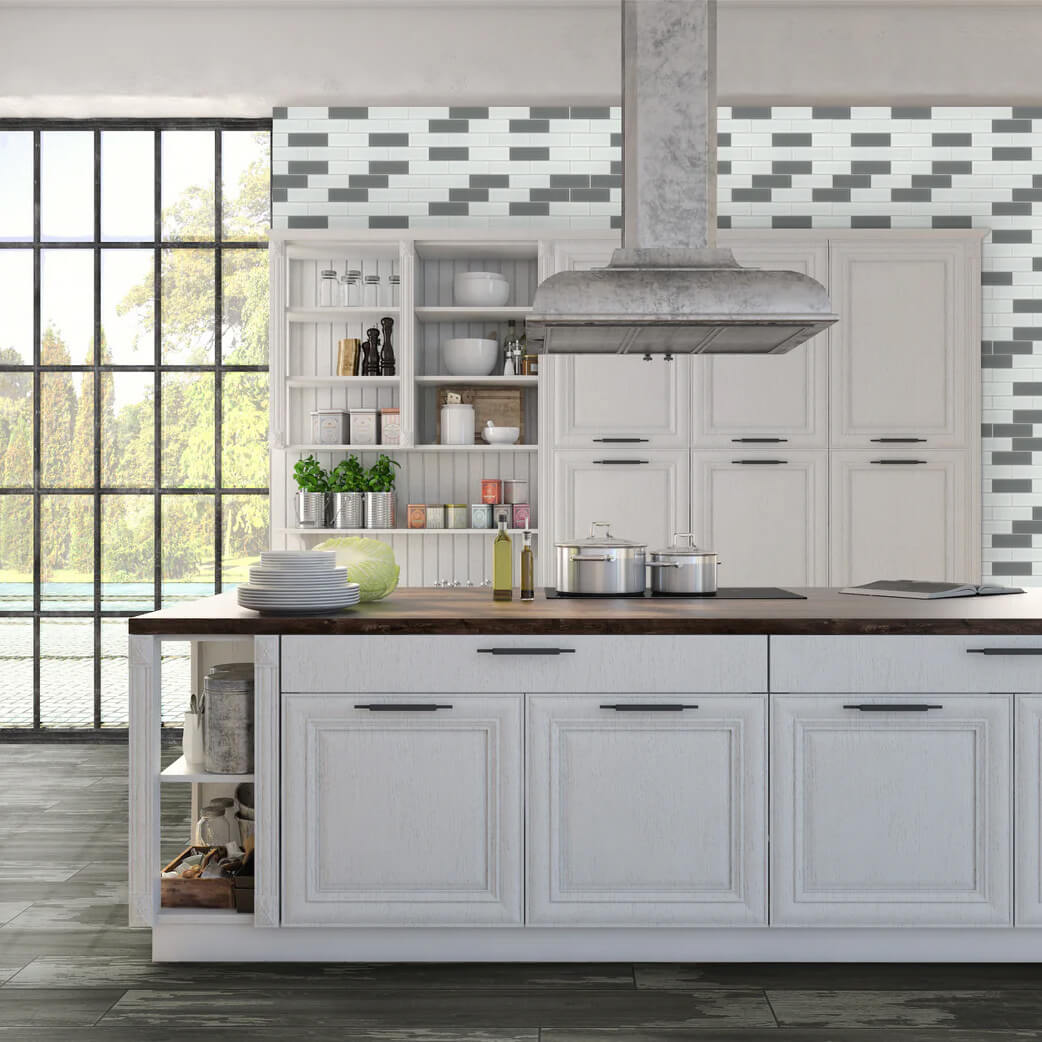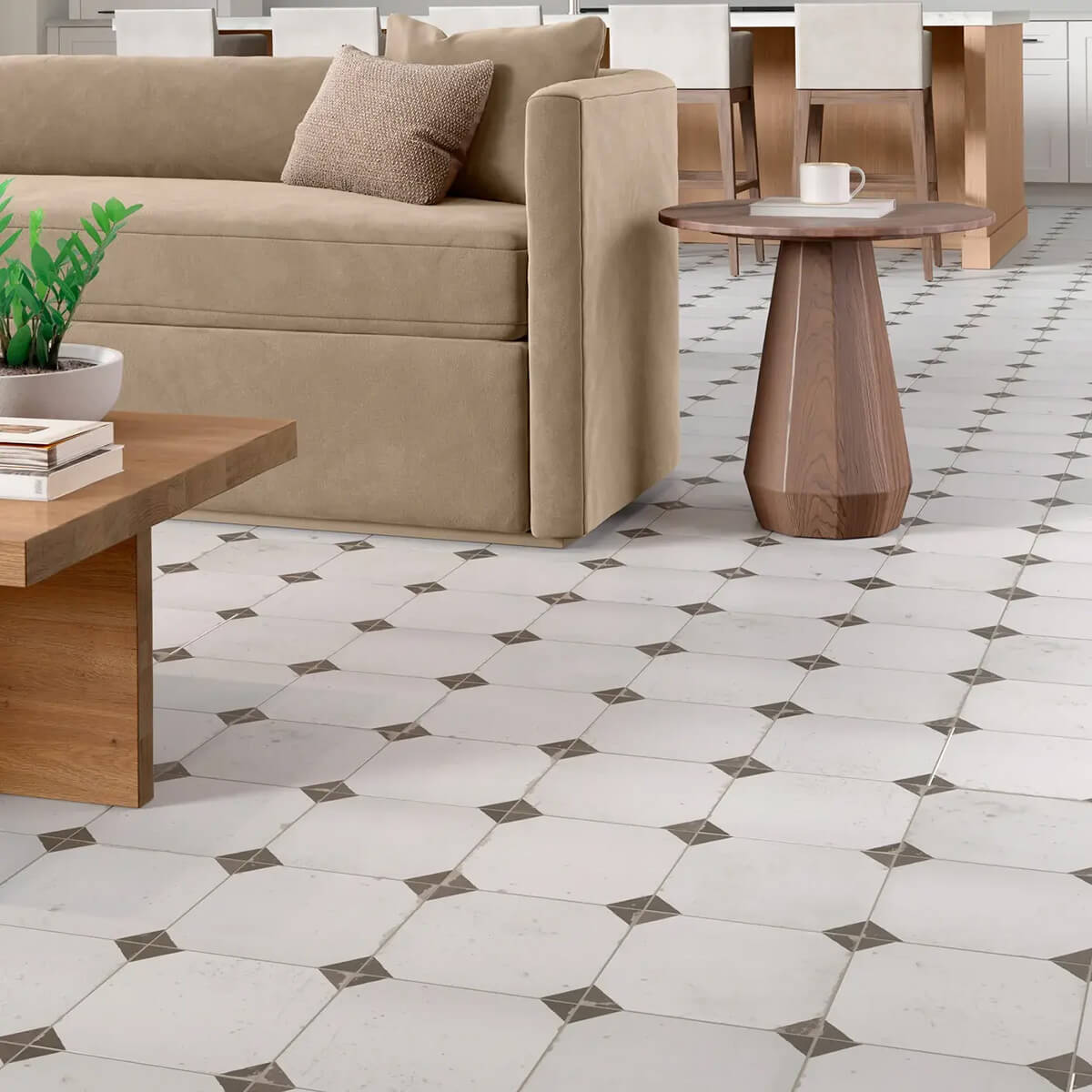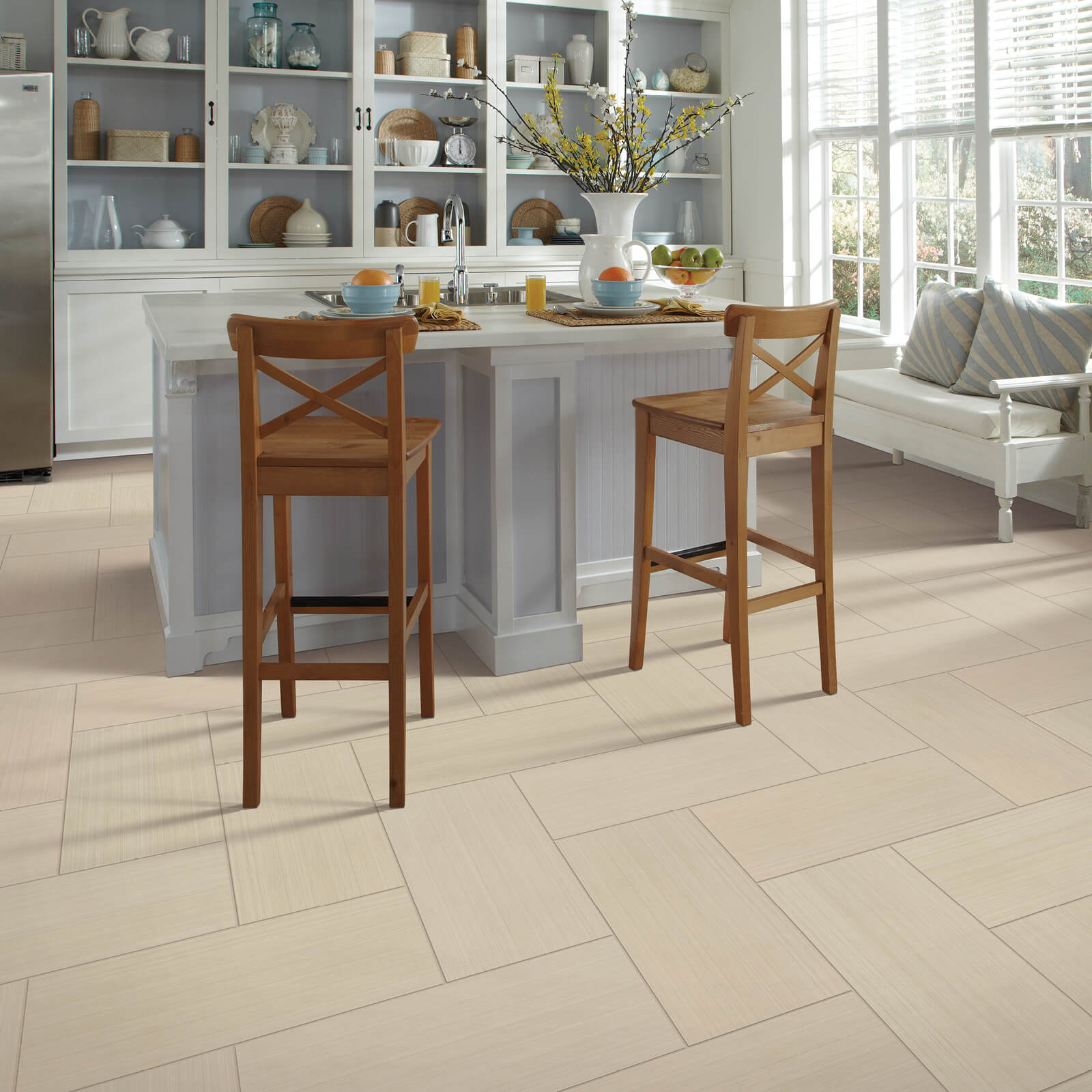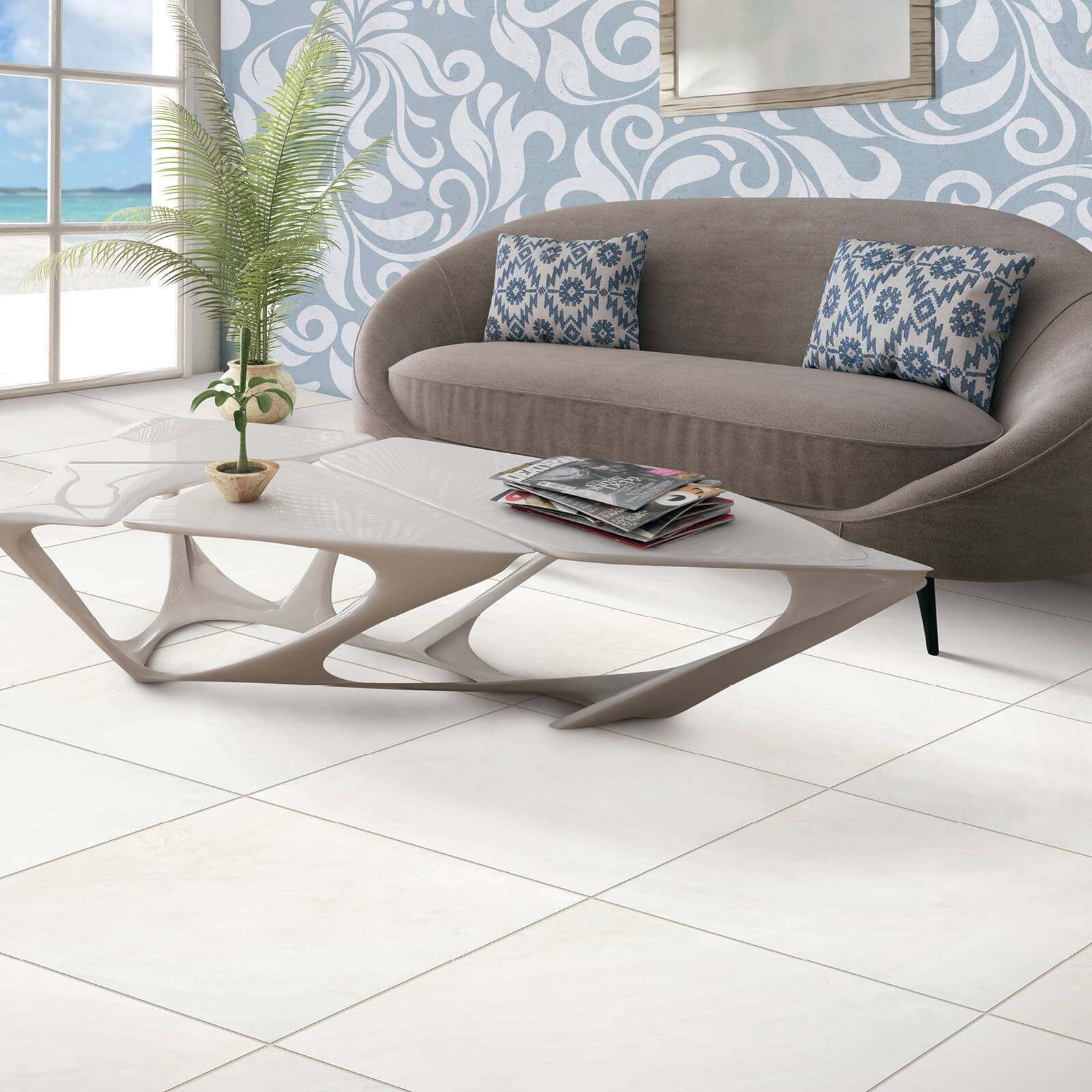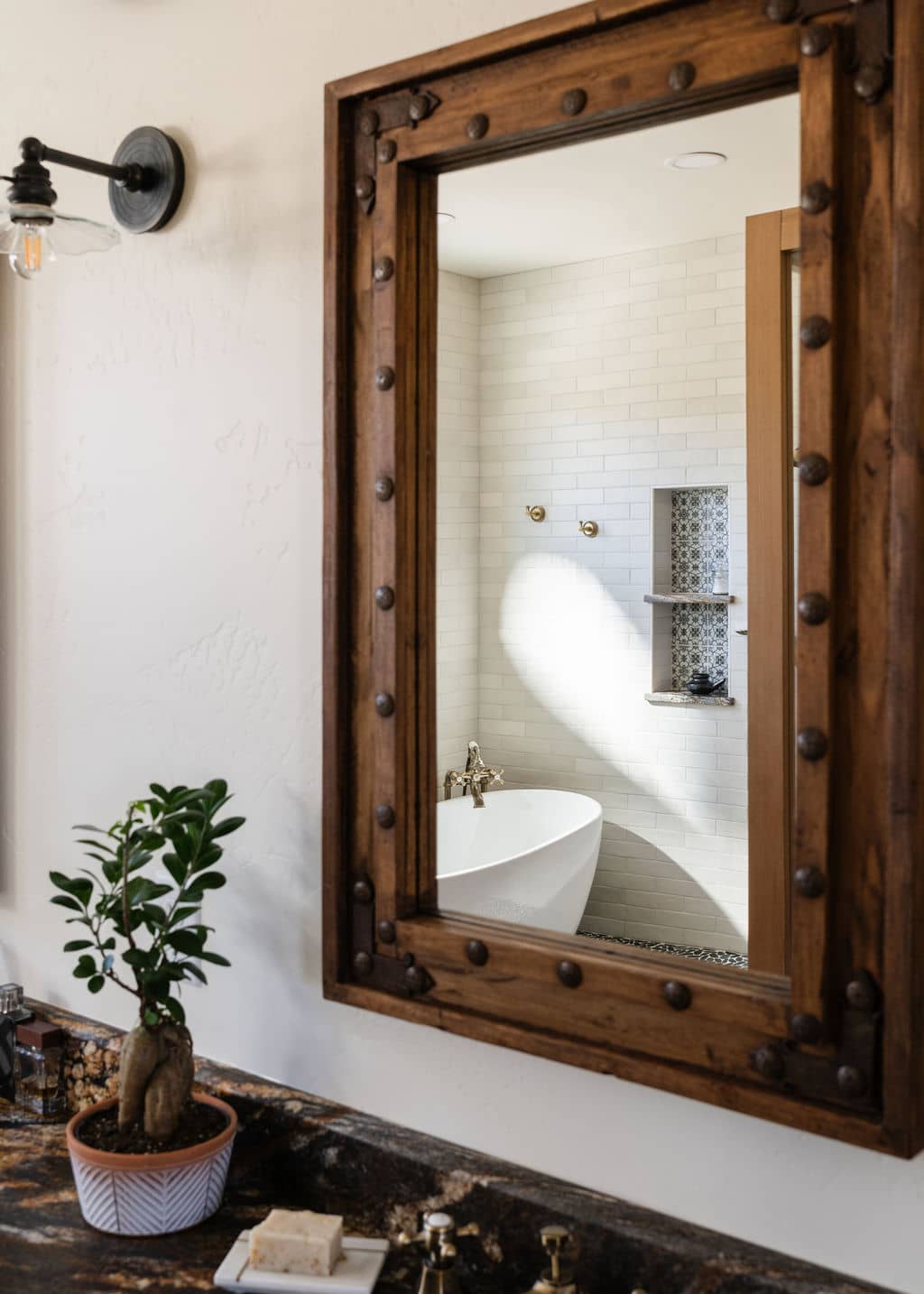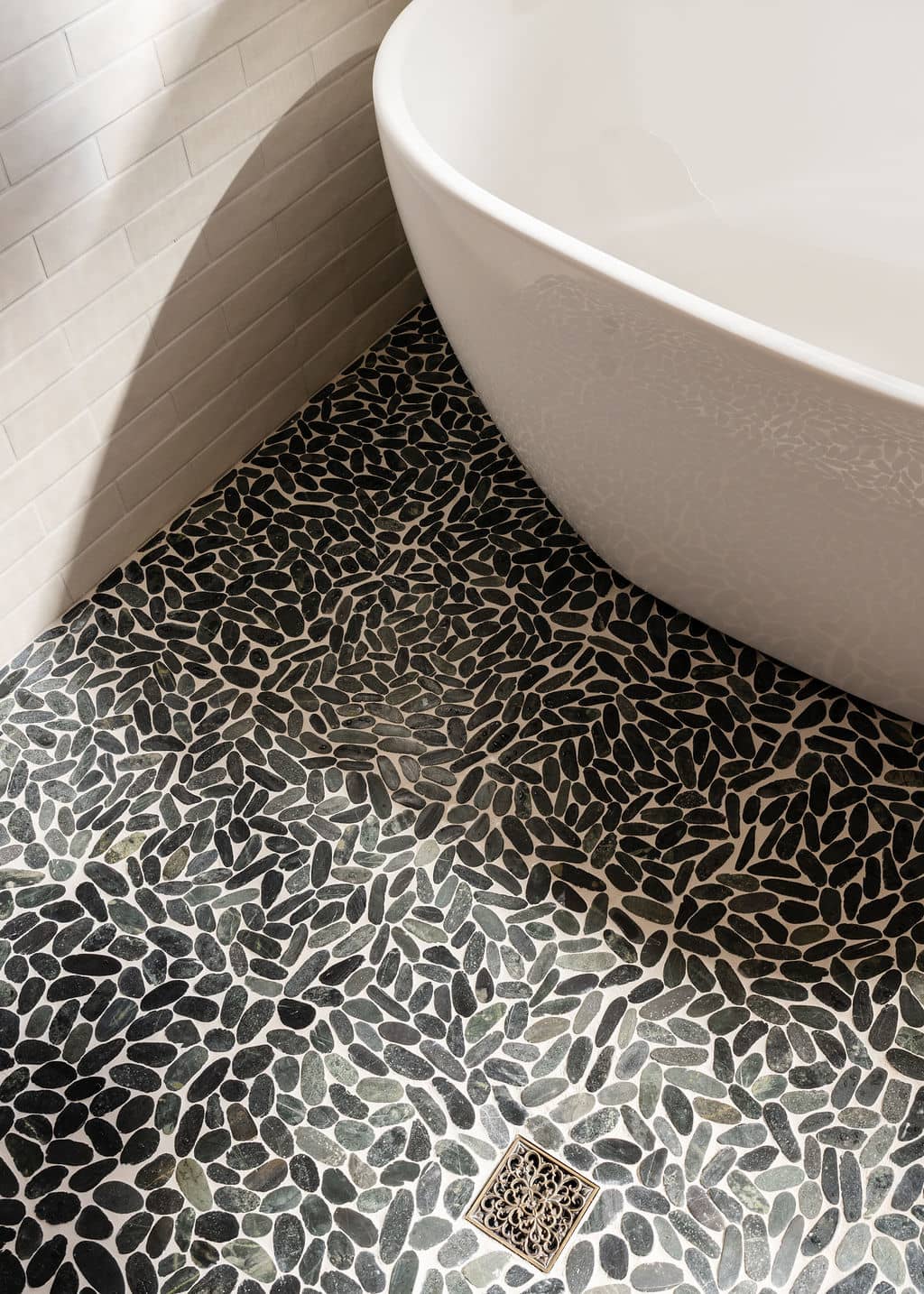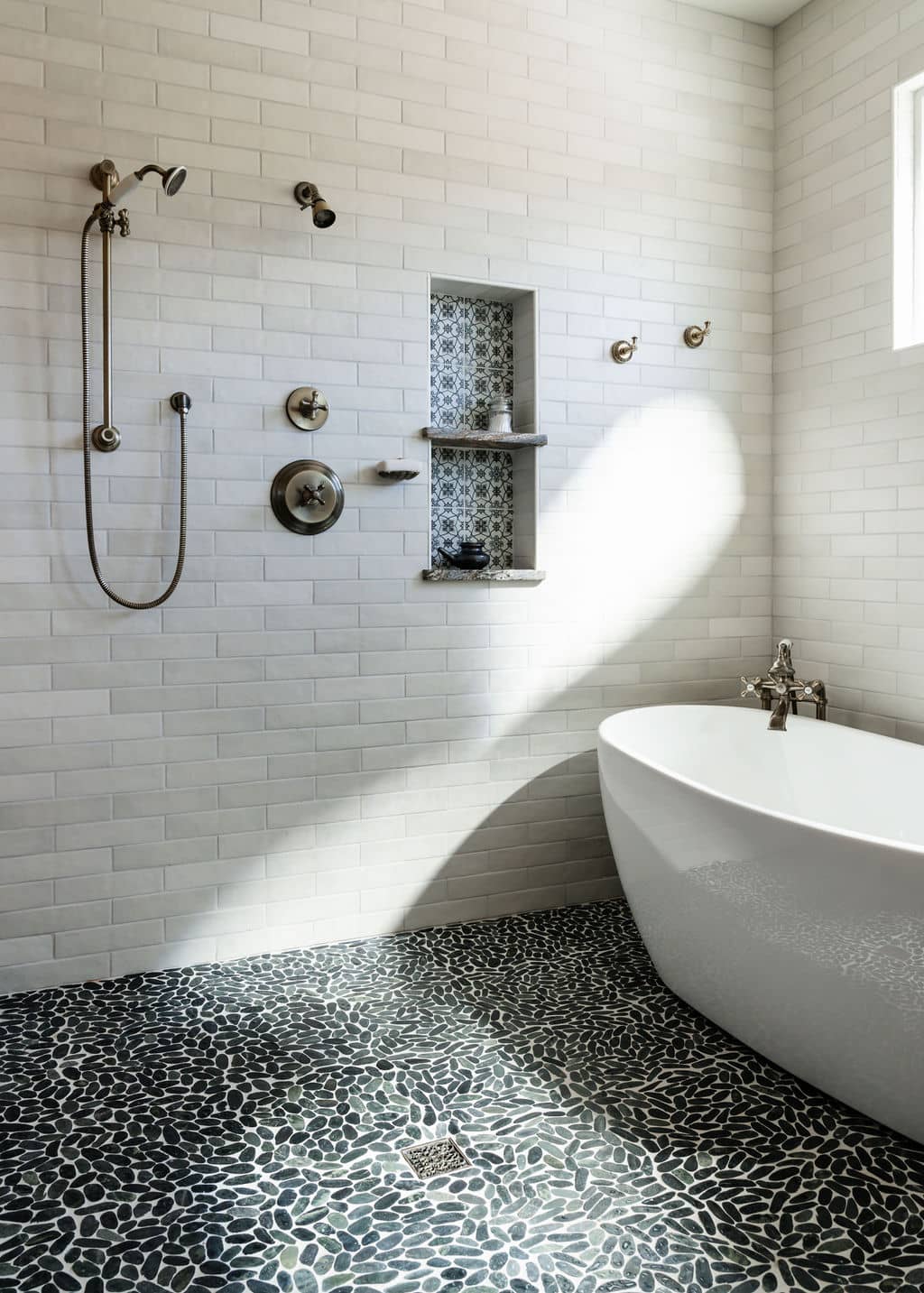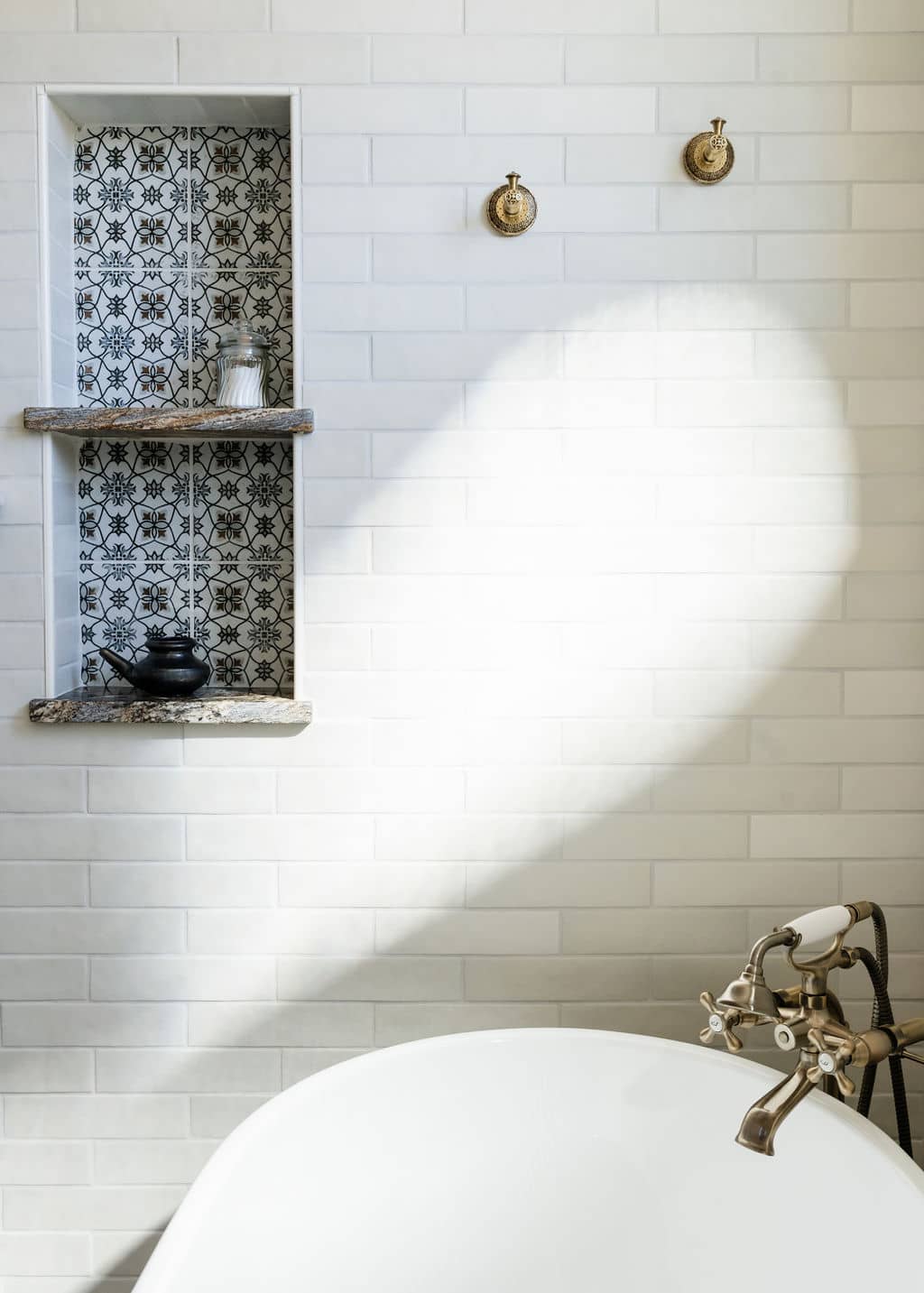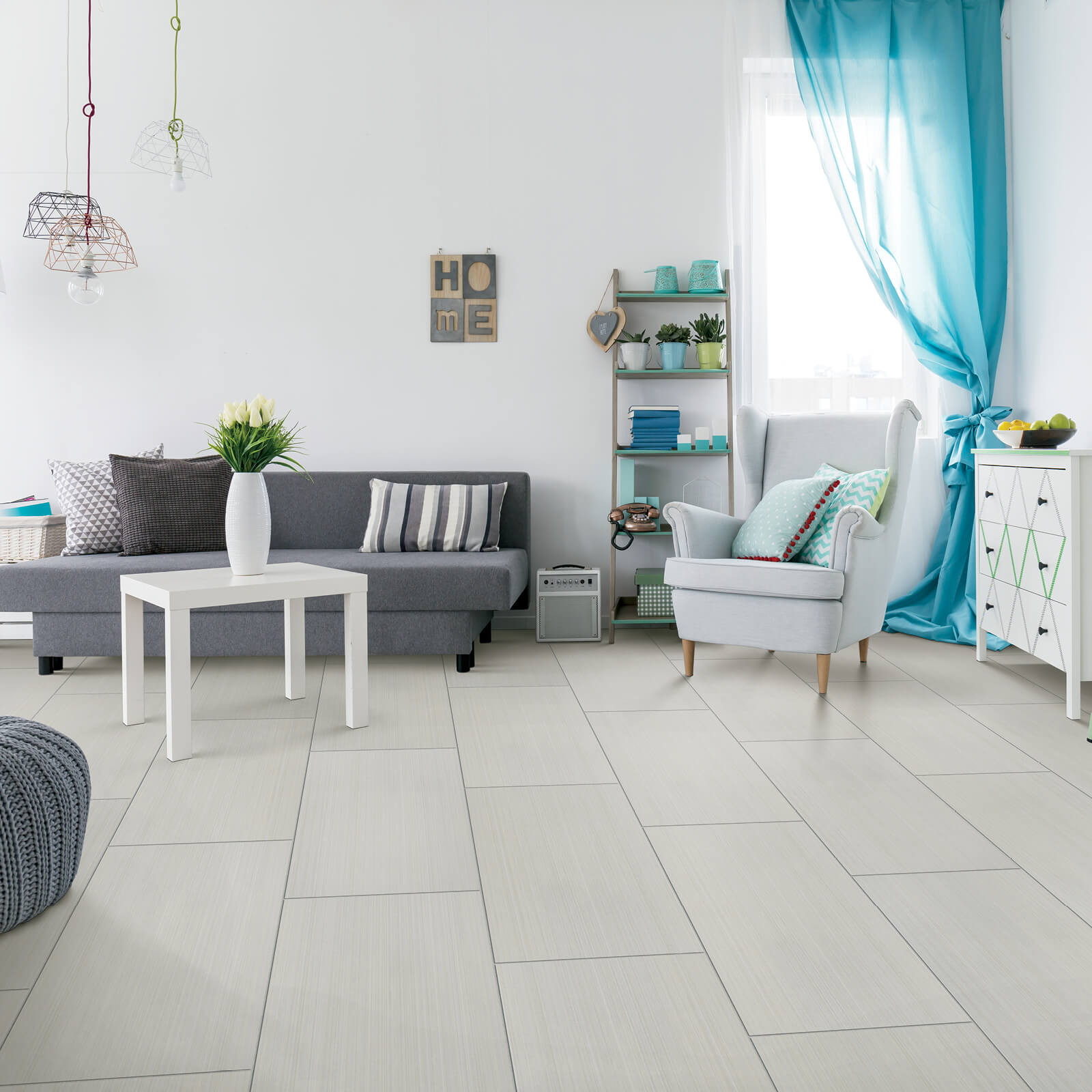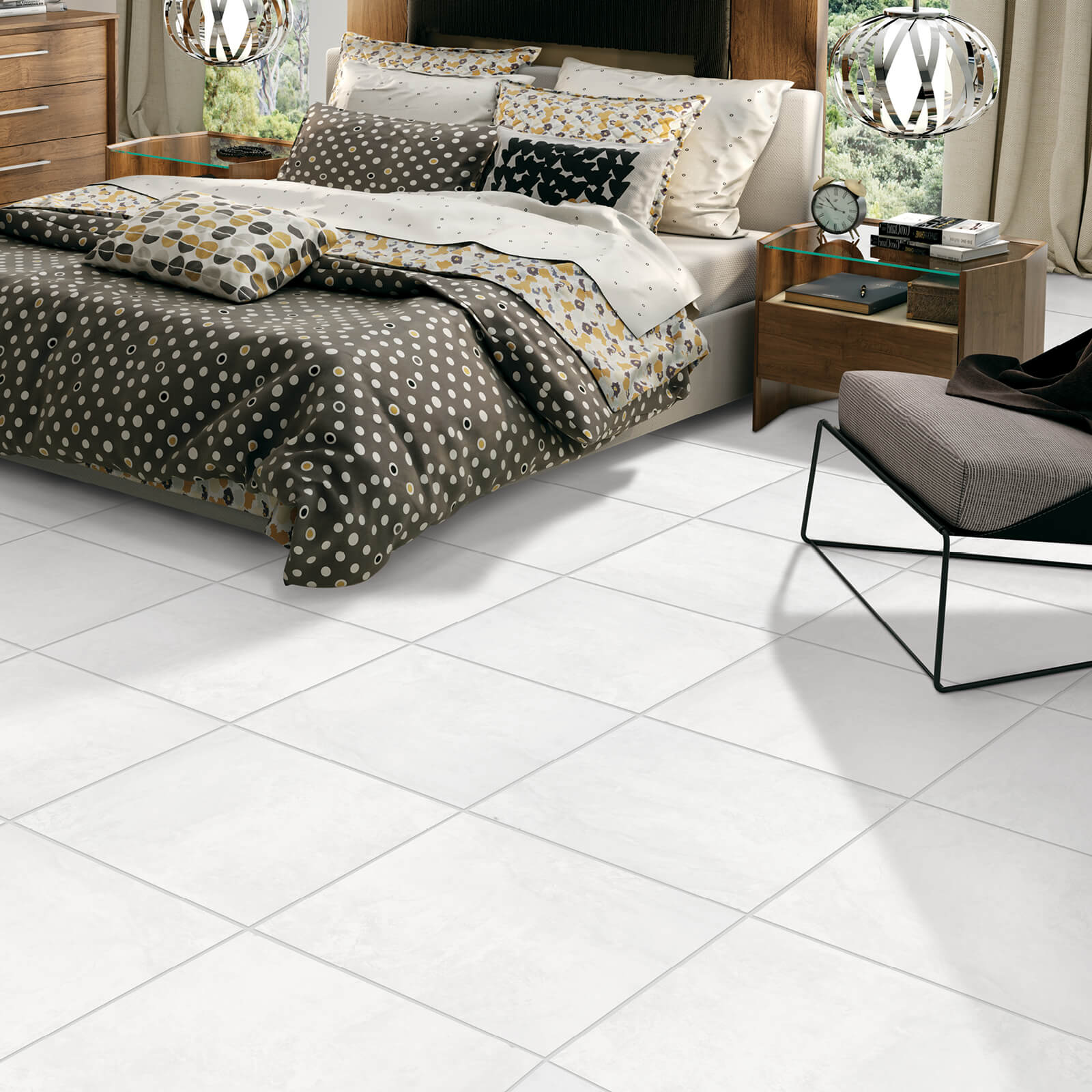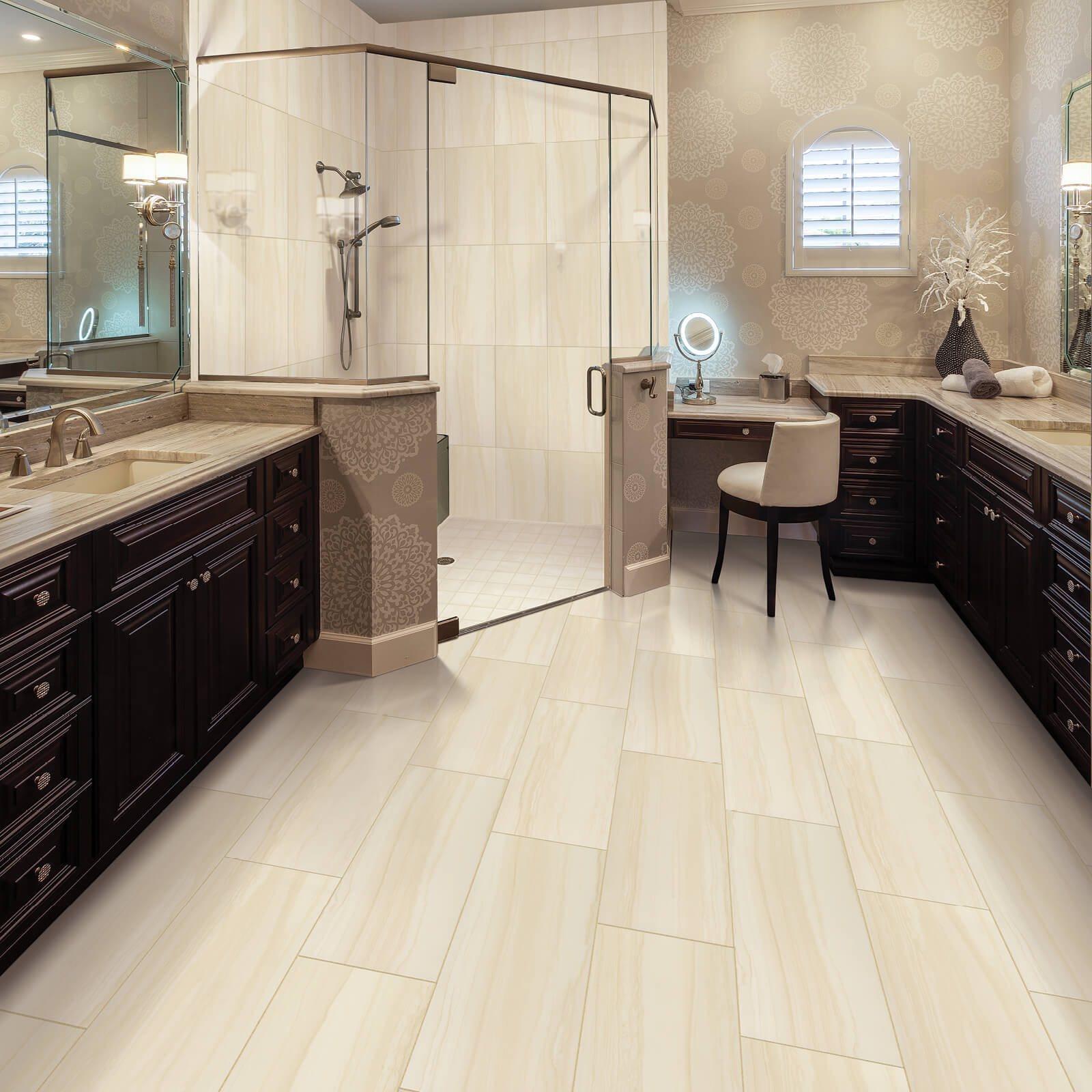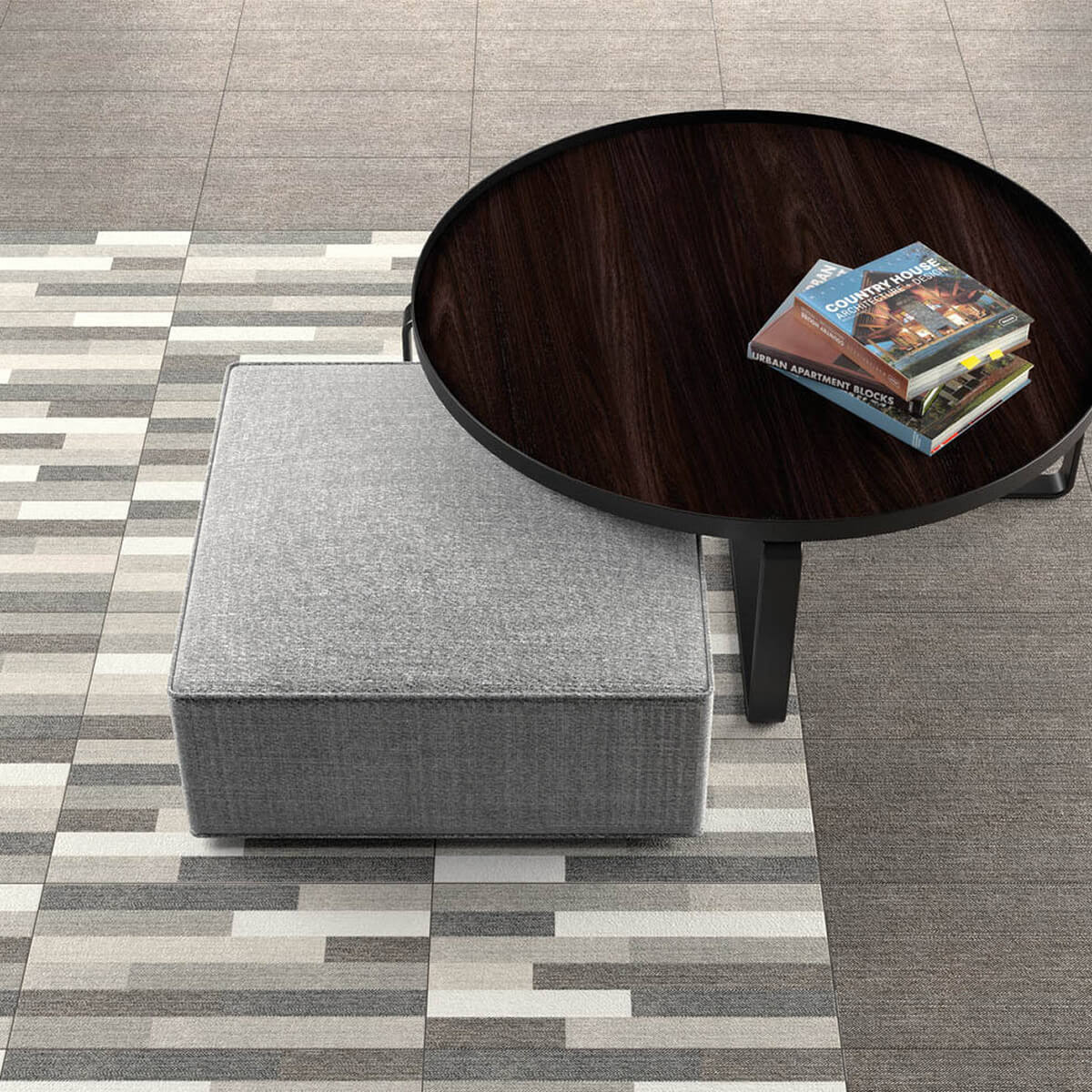Why choose tile
Sophisticated tile surfaces instantly uplift your interiors with classic presence, inherent elegance, and supreme durability. Tile offers a higher level of design capability and the opportunity to achieve truly unique installations for floors, walls, and backsplashes.
The inherent moisture resistance of tile also makes this attractive material a great fit for stylish kitchens and bathrooms, as well as luxurious common areas and bedrooms. Also, your surfaces will keep their appearance for years.
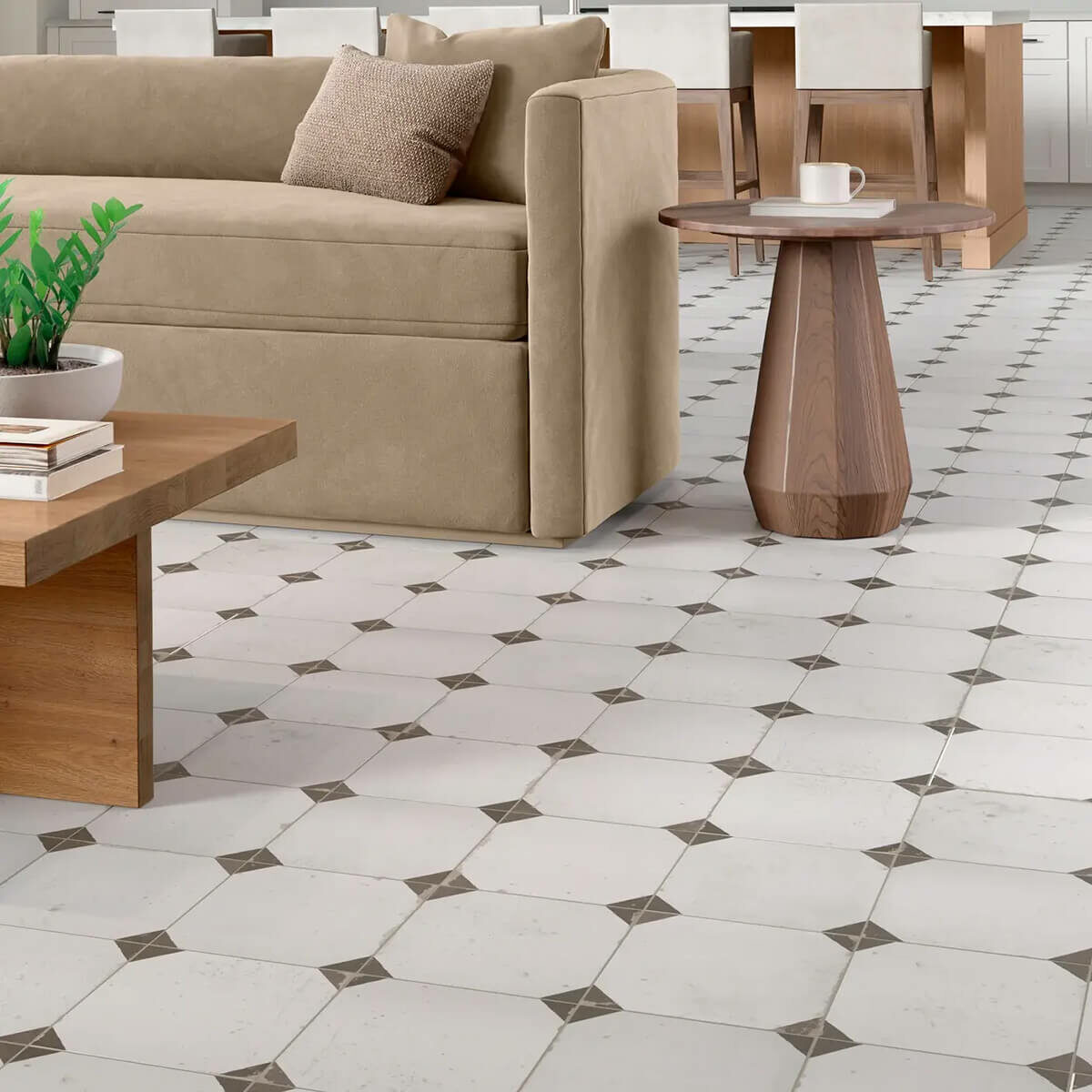
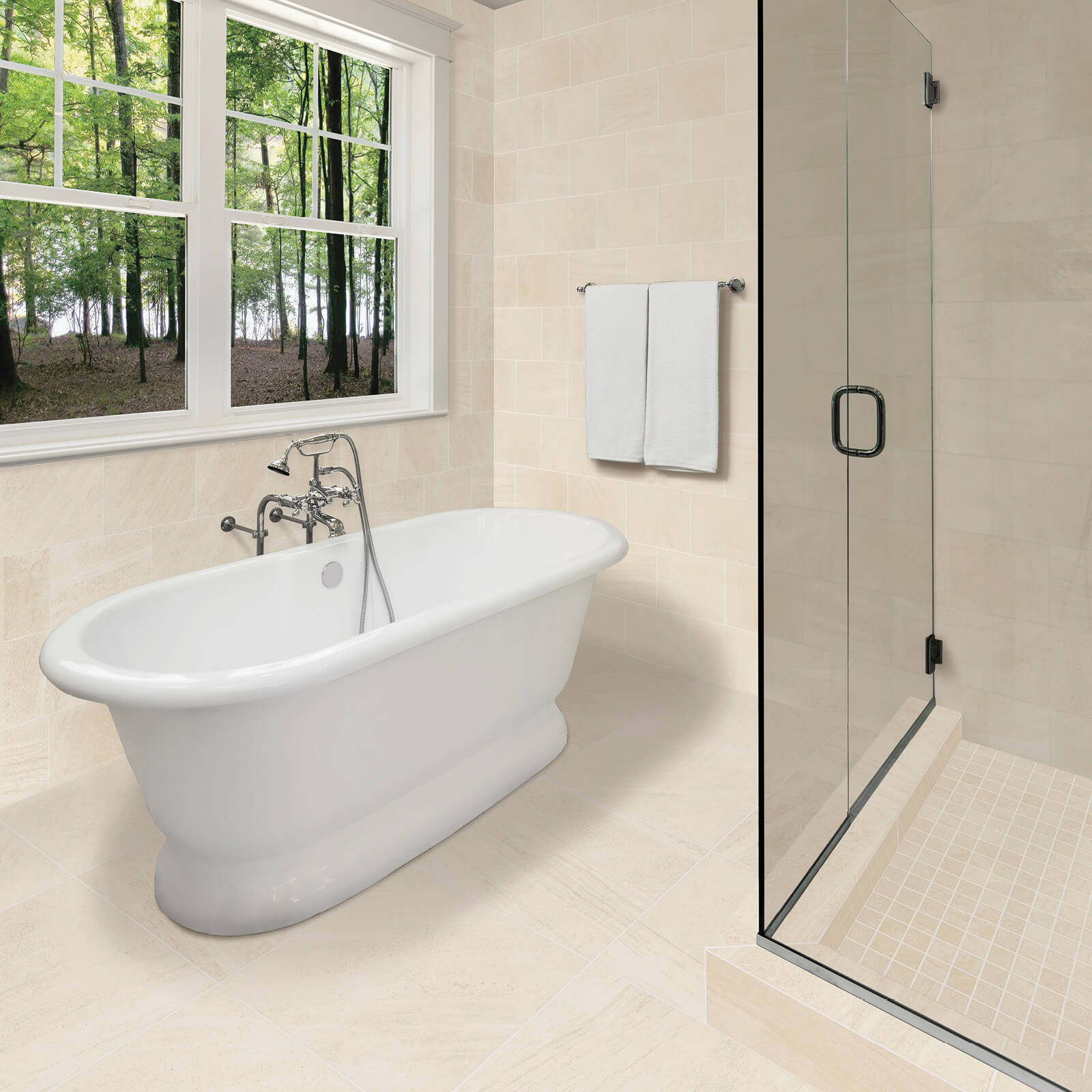
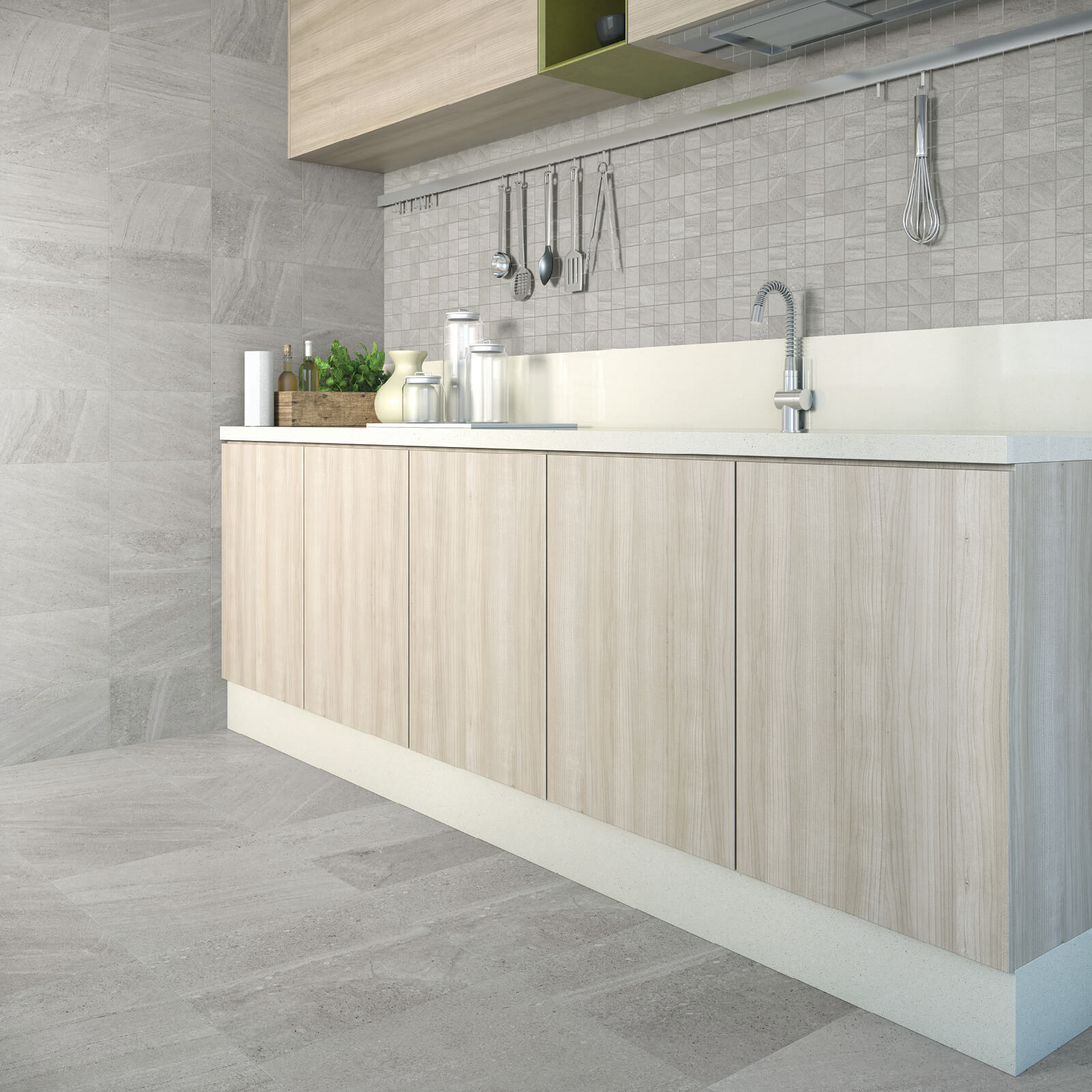
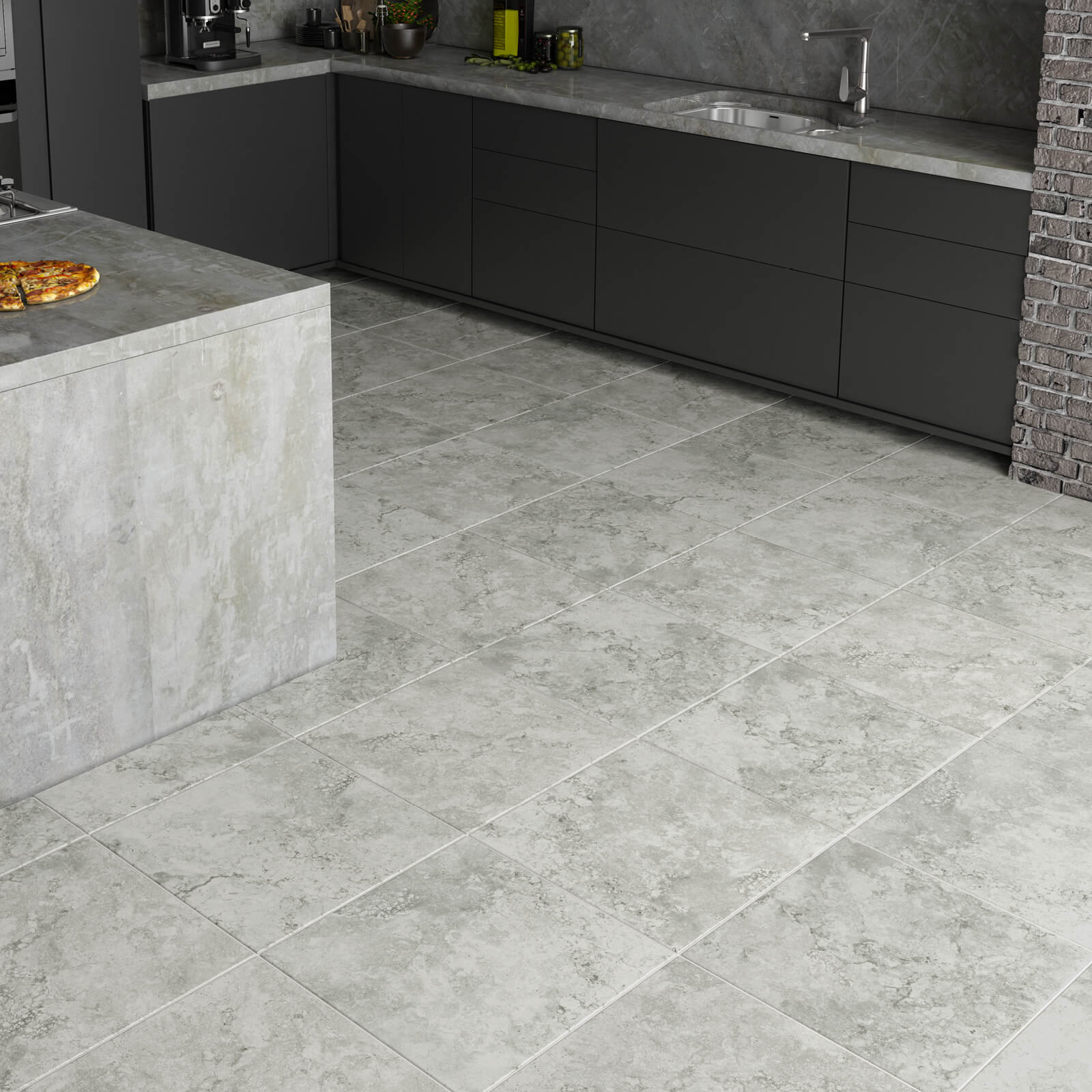
Types of tile
Explore different tile constructions, densities, and finishes when selecting between different tile types. Each respective tile material has a specific hardness rating, porosity, and level of moisture resistance which will make some varieties better suited for high-traffic areas more than others. Depending on the vision that you aim to achieve, different finishes such as matte or high gloss will produce different effects with light in the room. Mixed-size and mixed-format tile installations can help create a personalized look that gives your space a more expensive, custom appeal.
tile Cleaning Tips
Sweeping, dust-mopping, and vacuuming is the best way to care for your tile floors. Regular sweeping with a soft bristle broom, dust-mopping, or vacuuming as frequently as possible will help minimize dirt, dust, and debris build-up before they become abrasive particles. This ensures that your tile will experience fewer scratches over time. Disengage any beater bars on your vacuum model before using on your tile floors.
With inherent moisture resistance, you will be able to wet-mop or use a Swiffer WetJet system on your tile floors for an efficient deep clean whenever needed. Check with your tile manufacturer beforehand to maintain your product warranties and match the proper tile-specific cleaning products to your floor. To prevent slippery surfaces when mopping, it's recommended to only use as much water as necessary and dry the floors in a timely manner afterward.
When spills occur on your tile, you can easily prevent stains on the surface. First, gently lift any solid material with a spoon and paper towels. Then, absorb as much of the liquid spill as you can with additional paper towels. Consult your manufacturer’s guidelines to find a gentle tile-specific cleaner to treat the area. Clean the spot with your cleaner and new paper towels, sponge, or a dry white cloth. That's all it takes!
To clean any grout work in your tile floors, it's recommended to use a specified grout cleaner and grout brush.
Always use mats by entranceways to help remove damaging particles from reaching your tile floors. Have residents and guests take off footwear by the door, especially during inclement weather. Use area rugs throughout the home as another layer of protection for tile floors against spills, cracks, and scuffs. With pets in the home, make sure to trim nails and claws to avoid scratching the surface. Also, brush your pets regularly to reduce dander on your floors.
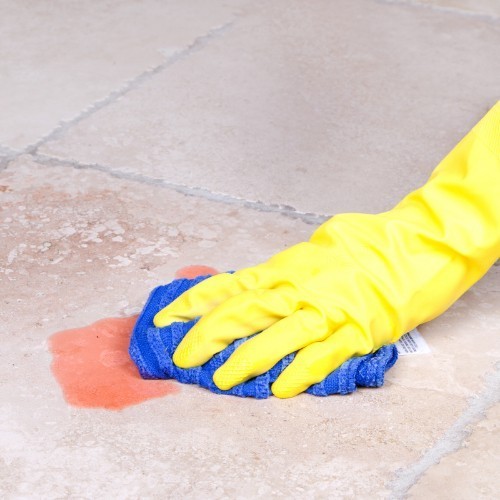
Remove all furniture, furnishings, electronics, and wall hangings from the rooms receiving new tile, as well as the closets. Since tile cannot be installed over existing flooring, the current floors need to be removed and disposed of entirely. Depending on the new tile height, you may need to take doors down and shave the bottom to ensure full range of motion. Any imperfections in the subfloor will need to be repaired before installation. Once your subfloor is assessed by the installation crew, you are ready for new tile installation!
On tile installation day, you will need to be on hand to answer questions that arise for your crew during the process. Specify an area for the installation crew to keep tile cutters and other dangerous tools, mix grout, and also cut tiles as needed. Keep all children and pets away from the installer’s work area and rooms receiving new flooring. This is the time to ask your installation crew any questions about your new tile floors!
Once your new tile floors are down, your installation crew will advise you on how long you need to wait before using the room. Tile floors with grout work will need time to set and cure or else an uneven surface can be created. Once you have waited for the specified amount of time, always return furniture by either lifting it or using proper moving equipment with rollers. We also recommend using felt pads under heavy furniture legs to reduce impact on the floor.

